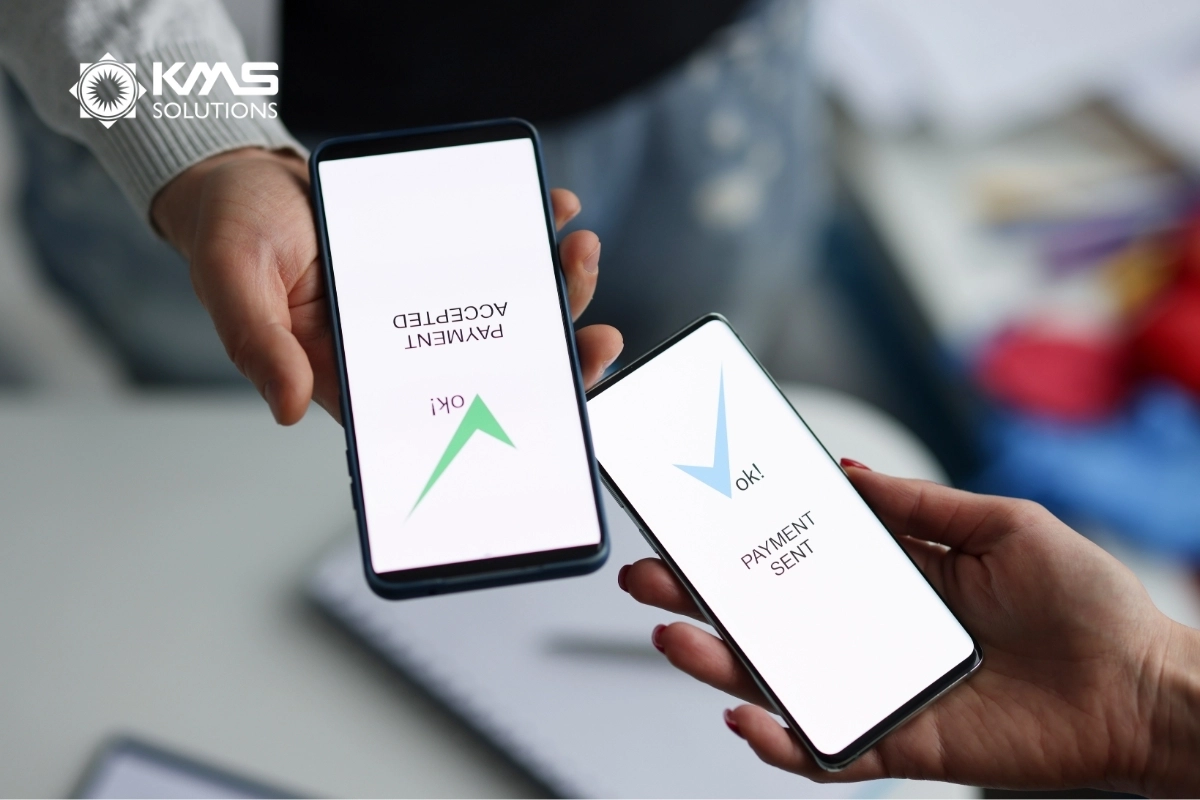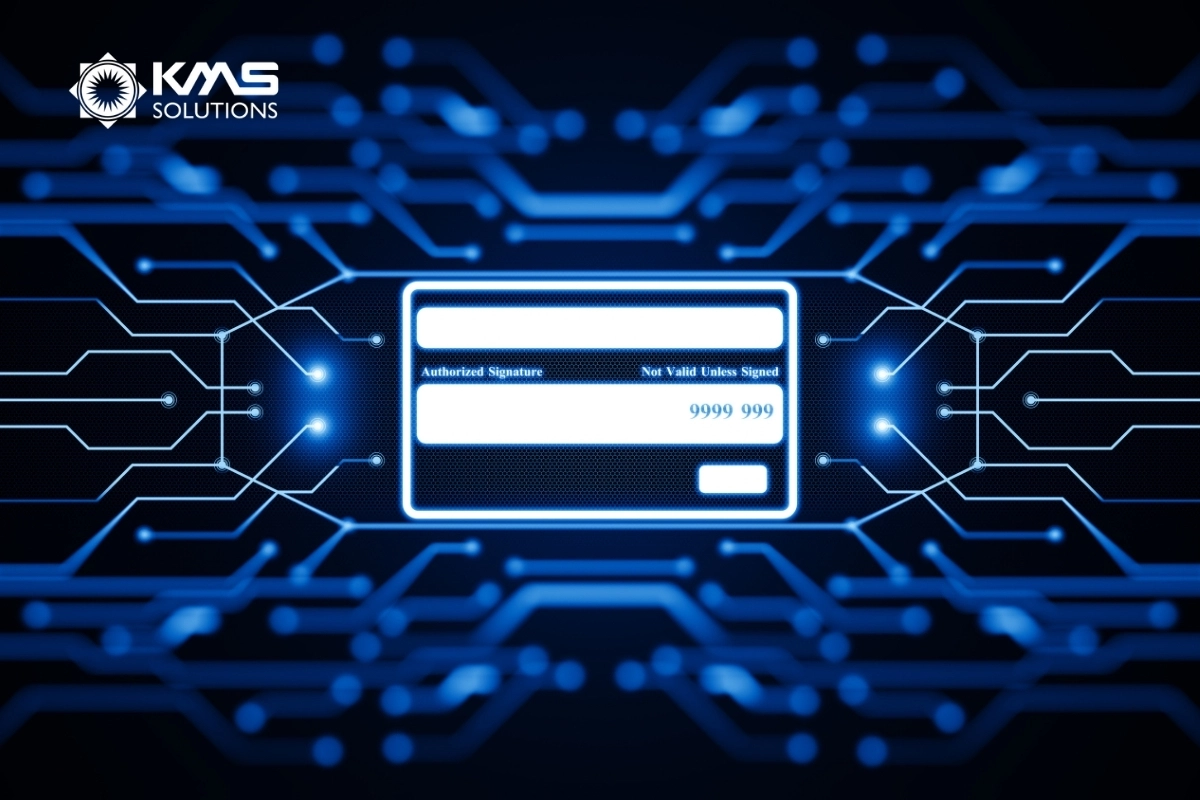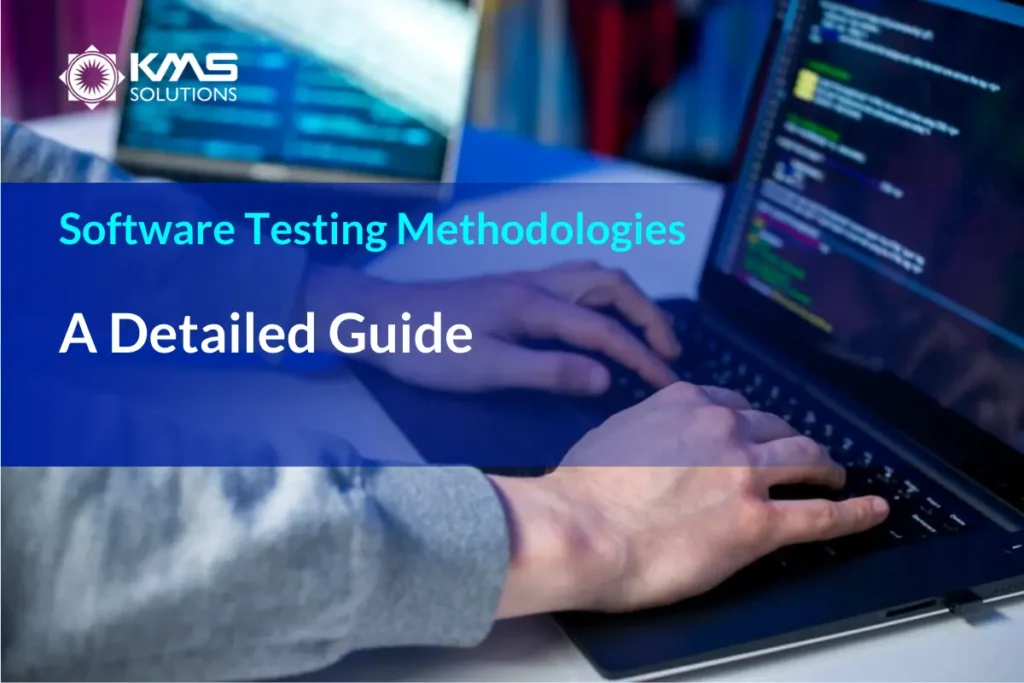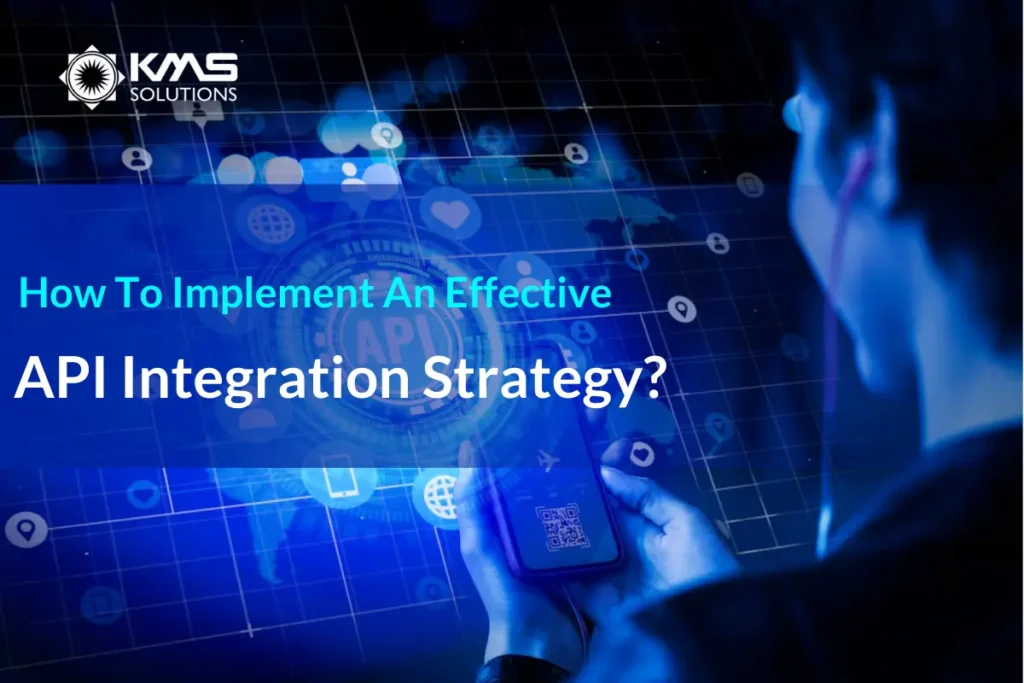BFSI companies are facing increasing demands for seamless, secure, and efficient transaction processing. Integrated payment solutions present a modern approach that can revolutionize transaction processes. These solutions help streamline financial transactions by unifying various payment methods and channels, offering a cohesive experience for customers and businesses alike.
To give you a more understanding of integrated payment solutions, this article explores their transformative power as well as demonstrates their potential to enhance business efficiency. Besides, KMS Solutions also provides a step-by-step guide to adopting these innovative systems!
1. What Are Integrated Payment Solutions?

Integrated payment solutions are comprehensive systems that combine various payment processing services into a single, seamless platform. Unlike traditional payment methods, where each transaction type may require a different system, integrated payment solutions unify these processes. Therefore, it allows BFSI businesses to manage all their payment activities from one interface.
From a business standpoint, this comprehensive overview enables better decision-making, as companies can easily track transactions, monitor cash flow, and identify trends or anomalies.
2. How Do Integrated Payment Solutions Work?
In this section, we’ll unravel the inner workings of these systems, highlighting how they simplify the payment process.
The Traditional Approach
In a conventional setup, the process is quite hands-on. Once a credit card transaction is completed, you must manually handle multiple tasks:
- Processing Payment Information: You start by processing the credit card details to ensure the transaction goes through.
- Issuing Receipts and Invoices: After approval, you provide the customer with a receipt and generate an invoice for your records.
- Recording Transactions: At the end of the day, you gather all invoices and manually enter payment details into your accounting ledger.
- Reconciliation: You then verify that the total amount recorded matches the receipts collected, ensuring all transactions are accounted for accurately.
Streamlining with Integrated Payment Solutions
By applying integrated payment solutions, we can decrease the amount of work required while also lowering the chance of mistakes. Customers can choose their preferred payment method, and the transaction is completed quickly. Here’s how it works:
- Payment Processing: When a customer pays with a credit card, the transaction is directly processed through your accounting software.
- Automatic Data Handling: The integrated system immediately records the payment information, eliminating the need for manual entry.
- Bank and Ledger Sync: The transaction details are automatically sent to the bank and simultaneously updated in your accounting ledger, ensuring real-time accuracy.
- CRM Integration: The payment information is also saved to your Customer Relationship Management (CRM) system or any other integrated software you use, maintaining a comprehensive customer transaction history.
3. Key Benefits of Integrated Payment Solutions

Integrated payment solutions are transformative, providing unparalleled advantages for both businesses and customers
3.1 Benefits for Businesses
The BFSI Businesses can unlock a plethora of advantages through integrated payment solutions. These include:
- Enhanced Operational Efficiency: Integrated payment solutions automate many of the manual processes associated with handling transactions. This reduces the time and effort required to process payments, manage invoices, and reconcile accounts. With all payment data centralized, businesses can easily track and manage their finances.
Read more: 7-Step Checklist for Effective Finance System Integration
- Improved Cash Flow Management: By streamlining the payment process, businesses can receive funds more quickly and predictably. This timely access to funds improves cash flow management, allowing businesses to better plan and allocate resources.
- Enhanced Reporting and Analytics: Integrated systems provide valuable data on customer purchasing behavior and payment preferences. BFSI businesses can leverage this information to tailor their offerings and marketing strategies to meet customer needs more effectively.
3.2 Benefits for Customers
For customers, integrated payment solutions translate into a more convenient and swift payment experience:
- Convenience and Speed: Customers benefit from a seamless and quick payment experience. Integrated solutions support various payment methods, including credit/debit cards, mobile payments, and digital wallets, catering to diverse customer preferences.
- Enhanced Security and Trust: Trust in the payment process is further bolstered by the adherence of integrated systems to industry standards and regulations. These solutions offer robust security measures, including encryption and tokenization, to protect customer payment information.
4. Key Process to Integrate Payment Solutions
4.1 Choose A Payment Provider
Selecting the right payment provider is a foundational step in integrating payment solutions. Banks and financial institutions must consider several factors when choosing a provider:
- Security and Compliance: Ensure the provider complies with PCI DSS standards and other relevant regulations. This includes robust encryption methods and fraud detection mechanisms.
- Integration Capabilities: The provider should offer APIs and SDKs that are compatible with your existing systems, such as core banking software, CRM systems, and ERP solutions.
Read more: Expert API Integration for Your Business
- Scalability and Reliability: Choose a provider with a proven track record of handling large transaction volumes without downtime.
Read more: Core Banking Integration: Modernizing Financial Services for the Digital Age

4.2 Set Up Your Account And API Keys
After selecting a payment provider, the next step is to set up your account and obtain API keys. An API key is a unique identifier that connects your website or app to the payment provider and grants access to their services.
Read more: Payment Gateway Integration to Enable Global Payment
You will need two types of API keys: a public key and a secret key. The public key is used for generating payment tokens on the front end of your website or app, while the secret key is utilized on the back end to verify and process these payment tokens. It’s crucial to keep your secret key confidential, as exposing it could compromise your security and data integrity.
To configure your account and API keys, it is essential to follow the instructions given by your payment provider. Typically, this involves registering your business details, verifying your identity, linking your bank account, and accepting their terms and conditions. Once this is done, you can access your dashboard and generate your API keys. The best practice here is to store your API keys securely and update them regularly
Read more: Integration Testing for Enterprise Applications: A Comprehensive Overview

4.3 Implement The Payment Form And Tokenization
Implementing a secure and user-friendly payment form can protect customer data and provide a seamless user experience. The payment form can either be hosted by your payment provider or integrated into your banking app.
If you opt to host the payment form on your website or app, you must ensure compliance with PCI DSS standards, which are the industry regulations for safeguarding cardholder data. For instance, the payment form in the banking app should include User Information, Payment Details, Security Features, and Other Features.
Tokenization converts sensitive payment details into a secure token, reducing the risk of data breaches and fraud. Use your public API key and the payment provider’s SDK to create a payment token on the front end, then send it to your back-end server for processing.

4.4. Process The Payment And Handle The Response
The final step in integrating payment systems is to process the payment and manage the response on your back-end server. To process the payment, use your secret API key along with the payment provider’s API to send the payment token and amount to the provider’s server.
The payment provider will verify the token, charge the customer’s payment method, and send back a response indicating the transaction status. The response could be successful, failed, or pending, depending on factors such as fund availability, payment method validity, or network connection. To handle the response, you’ll need to write code that checks the transaction status and takes the appropriate actions.
For instance, if the transaction is successful, you can update your database, send a confirmation email to the customer, and redirect them to a thank you page. If the transaction fails, display an error message to the customer, log the failure reason, and prompt them to try again. If the transaction is pending, inform the customer that their payment is being processed, and set up a webhook or cron job to check for updates from the payment provider.

5. Factors To Consider When Choosing An Integrated Payment Solution

The wrong choice can lead to inefficiencies, increased costs, and frustration. Here are five key factors to consider to ensure you make a smart, innovative, and engaging choice.
5.1 Scalability and Future-Proofing
As your business grows, your integrated solution must be able to scale with you seamlessly. Look for solutions that not only meet your current needs but also have the capacity to handle increased demands in the future. This involves considering both horizontal scaling (adding more systems or nodes) and vertical scaling (upgrading existing systems).
5.2 Customization and Flexibility
Every business has unique needs and workflows. An integrated solution should offer a high degree of customization to fit these specific requirements rather than forcing a one-size-fits-all approach. Flexibility in integration capabilities is also critical, allowing seamless connections with other existing systems or future technologies.
Tip: Involve your team in the selection process.
5.3 User Experience and Adoption
The best technology is only as good as its user adoption. A user-friendly interface and intuitive design are vital to ensure that your team can quickly learn and effectively use the new system. Poor user experience can lead to resistance, errors, and underutilization of the solution’s full capabilities.
Tip: Conduct hands-on demos and trial periods with your staff to gauge usability and gather feedback.
5.4 Cost-Benefit Analysis
While it’s tempting to go for the most feature-rich or the cheapest option, a thorough cost-benefit analysis is essential. Consider all of the long-term value, including maintenance, training, and potential productivity gains.
Sometimes, investing in a more expensive solution initially can lead to greater savings and benefits down the line.
6. Improve Your Payment Integration Process with KMS Solutions
After all, the article has provided a comprehensive look at how embracing integrated payment systems can lead to increased customer satisfaction, loyalty, and ultimately, a stronger competitive edge. These solutions have proven their strengths by not only speeding up transactions but also minimizing errors and fraud.
KMS Solutions is a reliable provider of software integration services. We have sucessfully integrated with over 30 third-party payment gateways, including major providers like PayPal and Stripe. We also offer end-to-end support, from the initial setup to deployment, ensuring that your integration process is smooth and efficient.
The details of its comprehensive payment integration services are provided below:
- Payment Gateway Integration: Our experts configure the gateway to work with your existing systems, ensuring that transactions are processed smoothly and accurately.
- Customising Payment Gateway: KMS Solutions understands that each business has unique requirements, and as such, offers customization options to enhance the payment experience. This can include adjusting the user interface to align with your branding, integrating with other systems or software that your business uses, and implementing features that cater to your specific operational needs.
- Testing the Payment Gateway: We conduct extensive testing to verify that the payment gateway functions correctly across different scenarios and environments. The goal of rigorous testing is to identify and address any potential issues before the gateway goes live.
- Ongoing Payment Gateway Support: Finally, KMS Solutions provides continuous support services to address any issues that may arise post-deployment. It ensures that your payment gateway remains operational and effective, even as your business evolves and technology changes.









